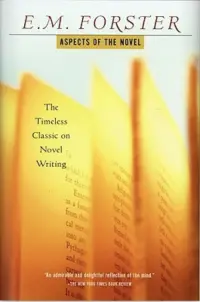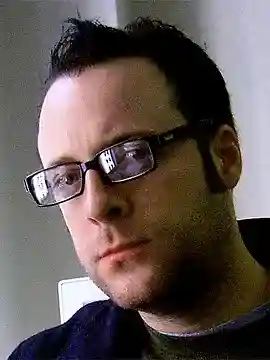Here’s a question I hear a lot in writing workshops: do characters have to “change” throughout the course of the narrative? Do they have to learn something or evolve in some way by the story’s end? Or can they just continue unfettered, behaving the same as before?
The easy answer is this: there’s no rule saying a character has to change, experience an epiphany or undergo any transformation, or that they have to enter a story one way and leave another. Indeed, sometimes one’s inability to change is the story, so suffice to say characters are free to continue being just the way they were when the story began. In fact, if realism is what you’re going for, you don’t need me to tell you this is the standard M.O. for most “real” people in most circumstances.
 On the other hand, our understanding of a character should change at some point in the story. If a story never strays from our initial understanding of that character, it remains a fatalistic unfolding; we’re just watching the inevitable being carried out. I’m going to suggest an idea a lot of people won’t agree with, and it’s this: characters in fiction aren’t exactly designed to represent “real” people as we understand them. There’s a certain performance aspect to storytelling, so characters in works of fiction will always exist in a sort of context of convenience. On one hand, the writer need only divulge information about a character that will further our understanding of them for the sake of the story. We don’t have to know everything about everyone. On the other hand, the writer isn’t allowed to generalize about characters the way we can generalize about everyday people. It’s an existence where everything is intentional; anything you say about a character shapes that character (conversely, the less you say about a character, the more you actually say when you finally say something about him/her). Fictional characters are built to be understood, much more than we’d understand a neighbor or even a family member. Characters have no secrets (unless, of course, the writer wants them to). And most importantly, they're always fueled by specific motivations. So, as much as we may want our characters to appear “real,” characters in a story are deemed lifelike not because they’re facsimiles of us, but because their motivations are so intrinsically human that some carefully laid ink on paper can cast the illusion that they’re something they aren’t.
On the other hand, our understanding of a character should change at some point in the story. If a story never strays from our initial understanding of that character, it remains a fatalistic unfolding; we’re just watching the inevitable being carried out. I’m going to suggest an idea a lot of people won’t agree with, and it’s this: characters in fiction aren’t exactly designed to represent “real” people as we understand them. There’s a certain performance aspect to storytelling, so characters in works of fiction will always exist in a sort of context of convenience. On one hand, the writer need only divulge information about a character that will further our understanding of them for the sake of the story. We don’t have to know everything about everyone. On the other hand, the writer isn’t allowed to generalize about characters the way we can generalize about everyday people. It’s an existence where everything is intentional; anything you say about a character shapes that character (conversely, the less you say about a character, the more you actually say when you finally say something about him/her). Fictional characters are built to be understood, much more than we’d understand a neighbor or even a family member. Characters have no secrets (unless, of course, the writer wants them to). And most importantly, they're always fueled by specific motivations. So, as much as we may want our characters to appear “real,” characters in a story are deemed lifelike not because they’re facsimiles of us, but because their motivations are so intrinsically human that some carefully laid ink on paper can cast the illusion that they’re something they aren’t.
We discover who characters truly are when they’re in pursuit of what they want. Characters’ interactions with what they desire may not necessarily change them (though it might), but it should certainly change our view of them at some point in the story. In perhaps the best book on writing craft ever written, E.M. Forster in “Aspects of the Novel” wrote that the main purpose of the novel is to “express the romantic side of human nature.” This means stories run on human motivations. The best way to reveal human motivation is to make sure your story has a pending question, an idea that something is unresolved. This is often referred to as the story’s “major dramatic question,” and usually it’s responsible for moving the story forward. What does the character want? Characters should always be aware of themselves enough to know what they’re after (and so should the reader). A good litmus test for any story is to ask yourself: “what does my character want, and to what lengths will he/she go to get it?” Your character certainly doesn’t have to change, but we should be allowed to watch the course of their pursuit of what they want, because doing so will inevitably change our understanding of them.
So, how do you shift reader perceptions of a character while mapping their quests to have their desires fulfilled? For dramatic reasons we can temporarily submerge or hide certain elements of a character’s behavior until the time is right, until they’re pitted face-to-face with that agent of desire. When new character behaviors are brought to light in lieu of that coupling, it shifts the story by altering our understanding of that person (e.g., we discover they’re after x for reasons different than what we presumed; e.g., they’re so desperate for x they’re willing to go to inhumanely extreme lengths). Doing so creates an epiphany for the reader about who this person really is, and — if you’re really good — offers a glimpse of human nature we may have never seen before. And the higher the stakes of the pursuit for change, the more readers will invest emotionally. If those dramatic queues are never addressed — if a character doesn’t pursue some unresolved desire that could potentially change him/her, and if that pursuit doesn’t change our understanding of him/her — what’s the story? Fiction writing comes in many, many forms, but if there’s something almost all of it has in common it’s that it illustrates intrinsically human forms of expression in the face of change.
Get Aspects of the Novel by E.M. Forster at Bookshop or Amazon

About the author
Jon Gingerich is editor of O'Dwyer's magazine in New York. His fiction has been published in literary journals such as The Oyez Review, Pleiades, Helix Magazine, as well as The New York Press, London’s Litro magazine, and many others. He currently writes about politics and media trends at www.odwyerpr.com. Jon holds an MFA in creative writing from The New School. Some of his published fiction can be found at www.jongingerich.com.







